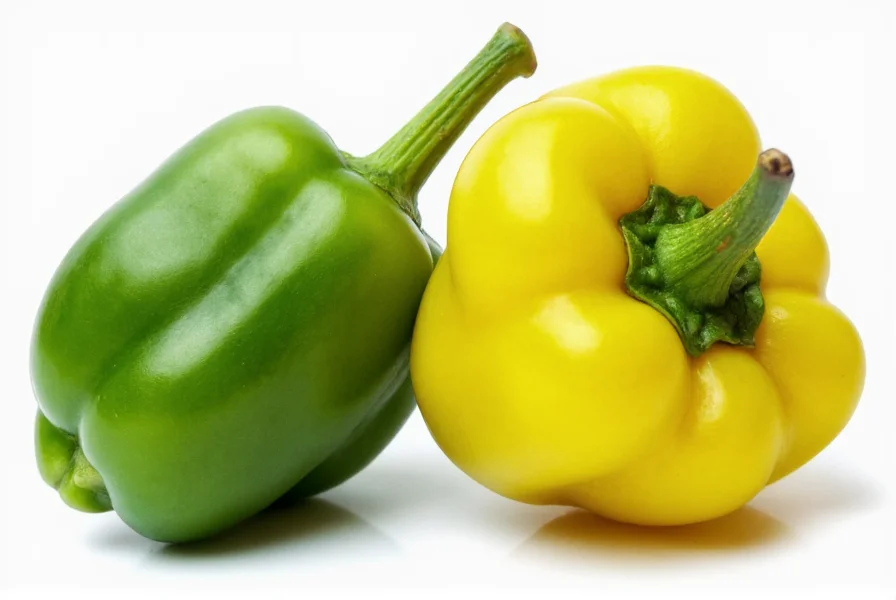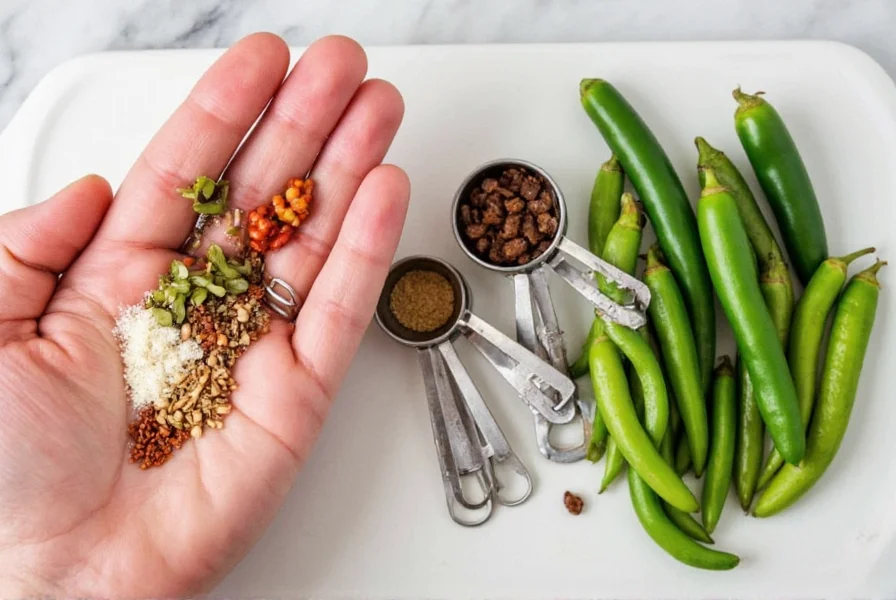If you're reaching for jalapeños only to find your pantry empty, don't panic. Understanding the right substitution for jalapeno pepper can save your recipe while maintaining the authentic flavor profile you're aiming for. Jalapeños bring a distinctive medium heat (2,500-8,000 Scoville Heat Units) with grassy, slightly fruity notes that define many Mexican and Southwestern dishes.
Understanding Jalapeño Characteristics
Before selecting a jalapeno pepper substitute, recognize what makes jalapeños unique. These cylindrical peppers measure 2-3 inches long with thick walls perfect for stuffing. Their heat level sits in the medium range—noticeable but not overwhelming for most palates. The flavor profile combines earthiness with subtle fruitiness, making them versatile across fresh salsas, pickled preparations, and cooked dishes.
When seeking a substitution for fresh jalapeno pepper, consider both heat measurement and flavor compatibility. The wrong substitute can dramatically alter your dish's character, turning a balanced recipe uncomfortably spicy or disappointingly bland.
Top Jalapeño Pepper Substitutes Compared
| Pepper Variety | Heat Level (SHU) | Flavor Profile | Substitution Ratio | Best For |
|---|---|---|---|---|
| Serrano | 10,000-23,000 | Grassy, brighter heat | 1:½ (use half) | Salsas, guacamole, fresh applications |
| Poblano | 1,000-2,000 | Earthy, mild, slightly sweet | 1:1.5 (use 50% more) | Stuffed peppers, rajas, cooked dishes |
| Cayenne | 30,000-50,000 | Sharp, intense heat | 1:¼ (use quarter) | Cooked sauces, soups, spice blends |
| Banana | 0-500 | Sweet, mild, tangy | 1:1 (same amount) | Pickled applications, mild salsas |
| Bell | 0 | Sweet, crisp, no heat | 1:1 (same amount) | Stuffed dishes, fajitas, mild recipes |
Detailed Substitute Options
Serrano Peppers: The Closest Flavor Match
When searching for a direct substitution for jalapeno pepper in fresh applications, serranos provide the most similar flavor profile with increased heat. These slender peppers grow 1-3 inches long and deliver a brighter, more intense kick. Use half the amount of serranos compared to jalapeños since they contain roughly twice the capsaicin. Serranos work exceptionally well in pico de gallo, fresh guacamole, and raw salsas where jalapeños typically shine.

Poblano Peppers: The Mild Alternative
For those needing a milder substitution for jalapeno pepper, especially in cooked dishes, poblano peppers offer an excellent solution. These large, heart-shaped peppers bring earthy notes with minimal heat. When substituting, use 50% more poblano than the recipe calls for jalapeño since they're significantly milder. Roasted poblanos develop complex flavors perfect for chiles rellenos, rajas con crema, and slow-cooked stews where jalapeños would normally provide background heat.
Cayenne Peppers: For Increased Heat
When your recipe demands more fire, cayenne makes an effective jalapeno pepper substitute in cooked applications. These slender red peppers deliver intense, straightforward heat without jalapeño's grassy notes. Use only one-quarter the amount of cayenne compared to jalapeño to achieve similar heat levels. Cayenne works best in simmered sauces, soups, and spice blends where its sharp heat can mellow and integrate with other ingredients.
Banana and Bell Peppers: Non-Spicy Options
For completely non-spicy substitution for jalapeno pepper, consider banana peppers for their tangy profile or bell peppers for sweetness. Banana peppers closely match jalapeño's shape and work well in pickled applications like jalapeño poppers or relishes. Bell peppers provide similar crunch and color but lack any heat—ideal for stuffed pepper recipes or fajitas where appearance matters more than spice.
Specialized Substitution Scenarios
When Using Dried Alternatives
Dried jalapeño substitutes require different conversion ratios since dehydration concentrates flavors and heat. For chipotle powder (smoked jalapeños), use ⅛ teaspoon powder per fresh jalapeño. Crushed red pepper flakes work as a jalapeno pepper substitute in cooked dishes at a 1:½ teaspoon ratio per pepper. Always add dried alternatives early in cooking to allow flavors to bloom.
Adjusting for Recipe Types
The perfect jalapeno substitute varies by cooking method. For fresh applications like salsas or salads, prioritize flavor similarity with serranos or fresnos. In cooked dishes like stews or sauces, consider how heat develops during cooking—poblanos mellow beautifully while serranos maintain their bite. For stuffed pepper recipes, choose substitutes with similar wall thickness like poblanos or bell peppers.
Non-Pepper Alternatives
When no peppers are available, create a jalapeno flavor profile using ¼ teaspoon cayenne pepper plus ½ teaspoon fresh lime juice per jalapeño called for. For milder applications, try ½ teaspoon paprika with a pinch of cayenne. These combinations won't replicate texture but can approximate flavor in a pinch.
Pro Tips for Successful Substitution
Always taste as you go when using a substitution for jalapeno pepper—heat levels vary significantly between individual peppers and growing seasons. Remove seeds and membranes to reduce heat from any substitute. For recipes where appearance matters, match pepper colors: green substitutes for green jalapeños, red for red-ripened varieties. Remember that cooking mellows heat, so you might need slightly more substitute in raw applications than cooked ones.

Frequently Asked Questions
Can I substitute green bell peppers for jalapeños?
Yes, but only when you want to maintain texture and appearance without heat. Green bell peppers provide similar crunch and color but lack jalapeño's characteristic spice. Use equal amounts, but recognize your dish will be completely mild. This works well for stuffed pepper recipes but not for salsas where heat is essential.
How much cayenne equals one jalapeño?
Use approximately ¼ teaspoon of cayenne pepper powder to replace one fresh jalapeño. Since cayenne is significantly hotter (30,000-50,000 SHU vs jalapeño's 2,500-8,000 SHU), start with less and adjust to taste. Remember that dried spices intensify during cooking, so add gradually.
What's the best jalapeño substitute for pickling?
Banana peppers make the best jalapeño substitute for pickling applications. They maintain similar texture and absorb brines well while providing mild heat. Use equal amounts of banana peppers to replace jalapeños in pickled recipes. For more heat, add a small amount of crushed red pepper flakes to the pickling liquid.
Can I use Tabasco sauce as a jalapeño substitute?
Yes, but with caution. Tabasco sauce (made from tabasco peppers) provides vinegar-forward heat different from fresh jalapeños. Use ½ teaspoon Tabasco per medium jalapeño, but recognize it will add significant vinegar flavor. This works best in cooked sauces or Bloody Marys, not in applications where fresh pepper texture matters.
Do jalapeño substitutes work the same in baking?
Jalapeño substitutes behave differently in baked goods. For cornbread or muffins, use equal parts finely diced poblano or banana pepper for mild heat. Serranos work if you want more kick, but reduce quantity by half. Remember that baking concentrates heat, so milder substitutes often work better in sweet applications like jalapeño-cheddar cornbread.










 浙公网安备
33010002000092号
浙公网安备
33010002000092号 浙B2-20120091-4
浙B2-20120091-4